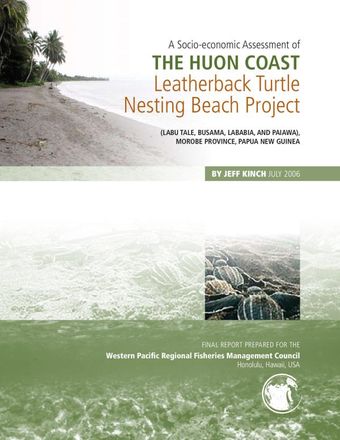Strategic plan of actions for the Conservation of Western Pacific Leatherback Turtle Populations and their habitats in the Bismarck Solomon Seas Eco-Region
- Description:
- In general, leatherback turtles face serious threats at all life stages, both on the beaches where they nest and hatch and in the water where they spend most of their life time. Sea turtle eggs are collected for food, while in some areas juveniles and adults are hunted for their meat and oil. Habitats that are keys to their survival are rapidly being degraded due to coastal development. They are also killed in great numbers as incidental catch, or by catch, in fisheries. As eggs and hatchlings, turtles are subject to significant predation from introduced predators, such as foxes and wild pigs, as well as natural predators.
- Display date:
- 2007
- Collections:
- Secretariat of the Pacific Regional Environment Programme (SPREP)
- Publisher:
- ?
- Content partner:
- Secretariat of the Pacific Regional Environment Programme (SPREP)
- Availability:
- Not specified
-
Copyright status: All rights reservedFind out more about what you are able to do with this itemThis item is all rights reserved, with means you'll have to get permission from Secretariat of the Pacific Regional Environment Programme (SPREP) before using it. For more information, please see our use and reuse page.What can I do with this item?Non-infringing useNZ copyright law does not prevent every use of a copyright work, and this item may be hosted by an international institute or organisation. You should consider what you can and cannot do with a copyright work.No sharingYou may not copy and/or share this item with others without further permission. This includes posting it on your blog, using it in a presentation, or any other public use.No modifyingYou are not allowed to adapt or remix this item into any other works.No commercial useYou may not use this item commercially.
Related items
Welcome and warm Pasifik greetings
The information on this site has been gathered from our content partners.
The names, terms, and labels that we present on the site may contain images or voices of deceased persons and may also reflect the bias, norms, and perspective of the period of time in which they were created. We accept that these may not be appropriate today.
If you have any concerns or questions about an item, please contact us.

